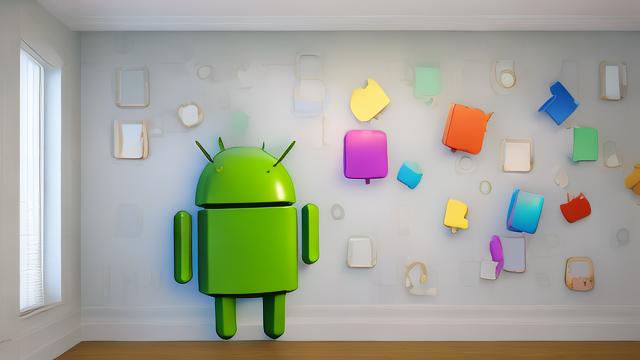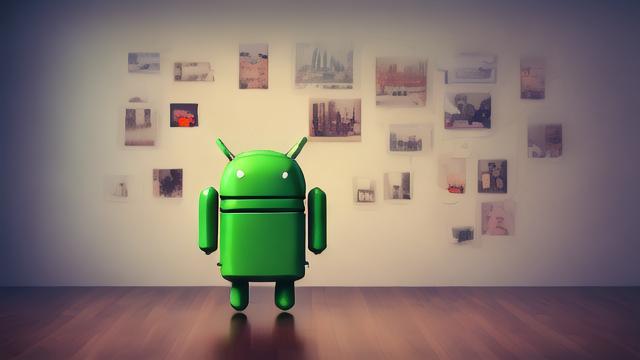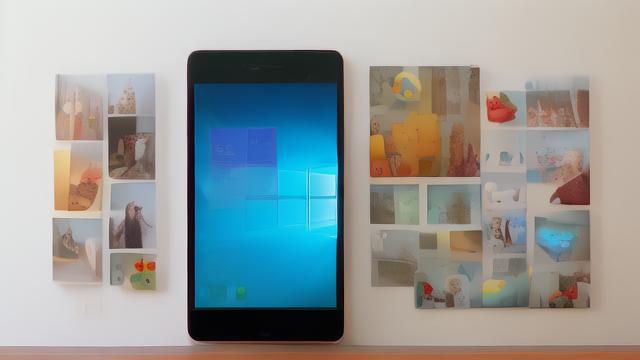Android实现照片墙

一、背景描述
照片墙是一种在移动应用中常见的展示形式,用于以网格的形式整齐排列图片,这种布局不仅美观,而且能够高效利用屏幕空间,使用户能够一目了然地看到更多的图片,实现照片墙功能需要考虑图片的加载、缓存和内存管理等多方面的问题,本文将详细介绍如何在Android平台上实现一个高效的照片墙,并重点讲述如何通过LruCache来防止由于图片过多导致的程序崩溃。
二、需求分析
功能需求
GridView控件:作为照片墙的容器,按网格形式排列图片。
图片加载:支持从网络下载图片和本地存储的图片。
图片缓存:使用LruCache缓存已下载的图片,避免重复下载和内存溢出。
滚动加载:在用户滚动GridView时动态加载更多图片。
非功能需求

性能要求:图片滑动流畅,无明显卡顿。
内存管理:合理释放不再使用的图片资源,防止OOM(Out of Memory)。
用户体验:界面简洁美观,操作顺畅。
三、方案设计
技术选型
GridView:作为主要的图片容器。
ImageView:用于显示单张图片。
LruCache:用于缓存图片,减少内存消耗。

AsyncTask或Glide/Picasso等图片加载库:用于异步加载图片。
系统架构
UI层:包含GridView和自定义的适配器。
数据层:包含图片URL或本地路径。
缓存层:使用LruCache进行图片缓存。
网络层:负责从网络下载图片。
四、实现步骤
创建项目和布局文件
1.1 新建Android项目PhotoWallDemo
创建一个名为PhotoWallDemo的Android项目,并在res/layout目录下创建两个XML布局文件:activity_main.xml和photo_layout.xml。
1.2 activity_main.xml
<LinearLayout xmlns:android="http://schemas.android.com/apk/res/android"
android:layout_width="match_parent"
android:layout_height="match_parent"
android:orientation="vertical">
<GridView
android:id="@+id/photo_wall"
android:layout_width="match_parent"
android:layout_height="match_parent"
android:columnWidth="90dip"
android:stretchMode="columnWidth"
android:numColumns="auto_fit"
android:verticalSpacing="10dip"
android:horizontalSpacing="10dip"
android:gravity="center" />
</LinearLayout>1.3 photo_layout.xml
<RelativeLayout xmlns:android="http://schemas.android.com/apk/res/android"
android:layout_width="wrap_content"
android:layout_height="wrap_content">
<ImageView
android:id="@+id/photo"
android:layout_width="90dip"
android:layout_height="90dip"
android:src="@drawable/logo"
android:layout_centerInParent="true"/>
</RelativeLayout>2.编写适配器类PhotoWallAdapter
创建一个名为PhotoWallAdapter的类,继承自BaseAdapter,用于绑定数据到GridView。
public class PhotoWallAdapter extends BaseAdapter {
private Context mContext;
private String[] imageUrls;
private LruCache<String, Bitmap> mMemoryCache;
private final int maxMemory = (int) (Runtime.getRuntime().maxMemory() / 1024);
private final int cacheSize = maxMemory / 8; // Use 1/8th of available memory for cache
private Set<BitmapWorkerTask> taskCollection;
private GridView mPhotoWall;
private int mFirstVisibleItem;
private int mVisibleItemCount;
private boolean isFirstEnter = true;
public PhotoWallAdapter(Context context, String[] imageUrls, GridView photoWall) {
mContext = context;
this.imageUrls = imageUrls;
mPhotoWall = photoWall;
taskCollection = new HashSet<>();
final int memClass = ((ActivityManager) context.getSystemService(Context.ACTIVITY_SERVICE)).getMemoryClass();
// Use 1/8th of the available memory for this memory cache.
int cacheSize = 1024 * memClass / 8;
mMemoryCache = new LruCache<>(cacheSize);
mPhotoWall.setOnScrollListener(new AbsListView.OnScrollListener() {
public void onScroll(AbsListView view, int firstVisibleItem, int visibleItemCount, int totalItemCount) {
mFirstVisibleItem = firstVisibleItem;
mVisibleItemCount = visibleItemCount;
}
public void onScrollStateChanged(AbsListView view, int scrollState) {
if (scrollState == SCROLL_STATE_IDLE) {
isFirstEnter = false;
loadMoreImages();
}
}
});
}
@Override
public int getCount() {
return imageUrls.length;
}
@Override
public Object getItem(int position) {
return imageUrls[position];
}
@Override
public long getItemId(int position) {
return position;
}
@Override
public View getView(int position, View convertView, ViewGroup parent) {
if (convertView == null) {
convertView = LayoutInflater.from(mContext).inflate(R.layout.photo_layout, null);
}
ImageView photo = (ImageView) convertView.findViewById(R.id.photo);
String url = getItem(position).toString();
Bitmap bitmap = mMemoryCache.get(url);
if (bitmap != null) {
photo.setImageBitmap(bitmap);
} else {
photo.setImageResource(R.drawable.logo); // Default placeholder.
taskCollection.add(new BitmapWorkerTask(url, photo));
}
return convertView;
}
private void loadMoreImages() {
int toIndex = Math.min(mFirstVisibleItem + mVisibleItemCount, 2 * mVisibleItemCount);
for (int i = mFirstVisibleItem; i < toIndex; i++) {
loadBitmap(i, imageUrls[i]);
}
}
private void loadBitmap(final int position, final String url) {
if (cancelPotentialWork(url, position)) {
BitmapWorkerTask task = new BitmapWorkerTask(url, imageUrls[position]);
taskCollection.add(task);
task.execute(url);
}
}
private static boolean cancelPotentialWork(String url, int position) {
final BitmapWorkerTask task = getBitmapWorkerTask(url);
if (task != null) {
final int currentPosition = task.position;
if (currentPosition == position) {
return false;
}
task.cancel(true);
}
return true;
}
private static BitmapWorkerTask getBitmapWorkerTask(String url) {
// Return the existing task if it's still being executed or has been cancelled but not yet removed.
for (BitmapWorkerTask task : taskCollection) {
if (task.url.equals(url)) {
return task;
}
}
return null;
}
class BitmapWorkerTask extends AsyncTask<String, String> {
private String url;
private final ImageView imageView;
private int position;
public BitmapWorkerTask(String u, ImageView i) {
url = u;
imageView = i;
}
@Override
protected String doInBackground(String... params) {
return downloadUrl(params[0]);
}
@Override
protected void onPostExecute(String result) {
if (isCancelled) {
taskCollection.remove(this);
return;
}
if (!isCancelled()) {
Bitmap bitmap = decodeSampledBitmapFromResource(result, 90, 90);
if (bitmap != null) {
mMemoryCache.put(url, bitmap);
imageView.setImageBitmap(bitmap);
}
}
}
private String downloadUrl(String u) {
InputStream inputStream = null;
HttpURLConnection connection = null;
try {
URL url = new URL(u);
connection = (HttpURLConnection) url.openConnection();
connection.setDoInput(true);
connection.connect();
inputStream = connection.getInputStream();
return BitmapFactory.decodeStream(inputStream);
} catch (IOException e) {
e.printStackTrace();
return null;
} finally {
try {
if (inputStream != null) inputStream.close();
if (connection != null) connection.disconnect();
} catch (IOException ignored) {}
}
}
}
}小伙伴们,上文介绍了“android实现照片墙”的内容,你了解清楚吗?希望对你有所帮助,任何问题可以给我留言,让我们下期再见吧。